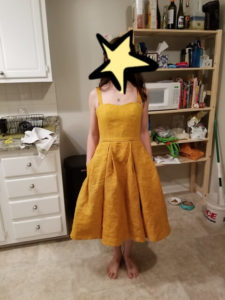
Are Linen Clothes Good Choice for Travel?
Put together the words “linen” and “travel” and surely you think about Somerset Maughan.
 He was the gentleman traveler in his linen suit, writing about the lives, gossip, and scandals of British colonials and the locals. This was in the years between 1890 and 1965, in the countries now known as Singapore, Indonesia, and Malaysia.
He was the gentleman traveler in his linen suit, writing about the lives, gossip, and scandals of British colonials and the locals. This was in the years between 1890 and 1965, in the countries now known as Singapore, Indonesia, and Malaysia.
He rode a mule through the jungles of Burma, fainted in front of an Indian ashram, tried cocaine in Cambodia, nearly died of malaria in Bangkok – and wrote stories about all of it.
If you haven’t read the books, you may have seen re-runs of the movies – and all the khaki linen suits worn by the characters!
This makes linen sound old-fashioned – and it is. In fact, dyed flax fibers have been found that date back 36 000 years. But it is also so contemporary, and worth adding to your travel wardrobe.
What’s so special about Linen?
Linen is cloth woven from flax. It is cool and fresh in hot weather and is the go-to fabric for smart casual blazer and trousers when wool is too hot and cotton too casual. It creases, but we’ve been conditioned to believe that wrinkled linen is still smart!
Making linen is quite laborious. Flax plants are pulled out of the ground rather than being cut down and are left for months to soften. This preserves the long fibers for smoother and softer yarn. The shorter fibers are spun together for upholstery or heavy garments.
The magic of linen comes from the weaving. Families and companies keep their processes a closely guarded secret, passing them down from generation to generation.
How do I know what is Good Quality Linen?
 The word linen is synonymous with the cloth. We talk about
The word linen is synonymous with the cloth. We talk about
- table linen and bed linen;
- in the past, undergarments, collars and cuffs and lingerie were called “linens”;
- woven textiles made from cotton, Hemp, and other non-flax fibers are loosely called linen.
For example, “silk linen” is pure silk, woven with a knobbly linen texture. So, make sure that know what you are buying.
With cotton, thread count indicates quality. The higher the number of threads fitted into an inch, the finer the thread and the higher the quality. This is not true for linen, as the fibers are quite thick. The better measure for linen is weight – usually given as gsm, grams per square meter. This is an indicator for usage rather than quality.
Linen for suiting is generally about 240 – 290 gsm, which allows the garment to hold its structure. Lighter weights need a lining to keep the shape. The lightest weights might be used for handkerchiefs and the heaviest for canvas.
The remarkable thing about linen is its longevity. Unlike cotton that has a 3- to 5-year lifespan, linen can last a lifetime. Bedding, tablecloths, upholstered items and even clothes are handed down as family heirlooms. Linen starts out as quite stiff, but it gets softer and softer with use and washing – and lasts and lasts.
How to check Linen quality?
Irish linen is often the standard for good linen, but you can’t always tell where your linen comes from. Be on the look-out for the following:
- “Slubs” - which are random thicker threads along the cloth. Good quality linen is smooth and consistent.
- Mistakes - shifts in the weave, especially at folds or places that wear, like cuffs and pockets.
- Uneven color - It’s difficult to dye linen, and poor workmanship may weaken the fabric.
- Yellow markings on white linen – this comes from poor processing and can’t be reversed.
- Signs of wear - caused by poor handling
How eco-friendly is Linen?
 Linen made the old-fashioned way is certainly eco-friendly. This is expensive, though, and genuine linen is increasingly becoming a luxury fabric.
Linen made the old-fashioned way is certainly eco-friendly. This is expensive, though, and genuine linen is increasingly becoming a luxury fabric.
Modern approaches and blends are making it more affordable and suited to our lifestyles. Blends with newer fabrics like Modal or Tencel solve the problem of creasing and add softness, silkiness, and luster to linen. Cotton or polyester blends are easier to care for.
A linen/wool blend is very good for trousers and suits and can be used for formal and smart casual wear. Because both fibers breathe and wool has great wicking properties – ie it takes moisture vapor away from your skin – this blend can be worn both winter and summer, and is a good choice for your travel wardrobe if you need to look your best.
Linen/cotton blends are good for shirts and dresses, as they are lighter and softer than pure linen. Pure linen shirts are more comfortable with fuller cuts.
What’s the difference between Linen and Hemp?
Hemp is made from the stalks of the cannabis plant (the industrial hemp strain, not the marijuana one!) Fibers are separated from the stalks, then spun into yarn to be woven or knitted into fabric. Linen is from the stalk of the flax plant and the process to convert it to fabric is almost identical to hemp. Both are so-called bast fibers.
Flax has less lignin than hemp so is less rigid and woody. It is easier to process, is more flexible and can be used for finer fabrics.
Despite this, people report that while both hemp and linen start off as being quite stiff, hemp softens more quickly after a wash and iron than linen does.
How easy is it to care for Linen?
Linen is strong when it is wet, so it can be washed at high temperatures. It has a natural sheen and sheds stains easily. Air dry, rather than using a dryer, and iron with a hot iron while it is still damp.
When linen is blended with other fabrics, linen’s characteristics seem to dominate. However, it’s safer to read the labels for washing instructions, especially when there are linings or facings of different fabrics.
How to travel with Linen clothes?
Traveling with linen takes some thought. Poor packing will lead to creases, and linen tends to hold creases. The fibers can even break on creases. Use a hanging garment bag if possible. Linen is not for backpacks – use solid sided suitcases, and pack less to reduce pressure. Unpack and hang up your linen garments as soon as you arrive. It’s probably best to pack a traveling iron with a steamer so that you can touch up your garments if necessary.
Perhaps you should put on your linen jacket, get out to meet the locals, and keep a journal or write a blog about your experiences. You may not be Somerset Maughan, but you too can have a following!
Written By Kate Mark

Kate is a mid-lifer who quit a growing corporate career to reawaken her passions and her lifelong dream of traveling the world.





